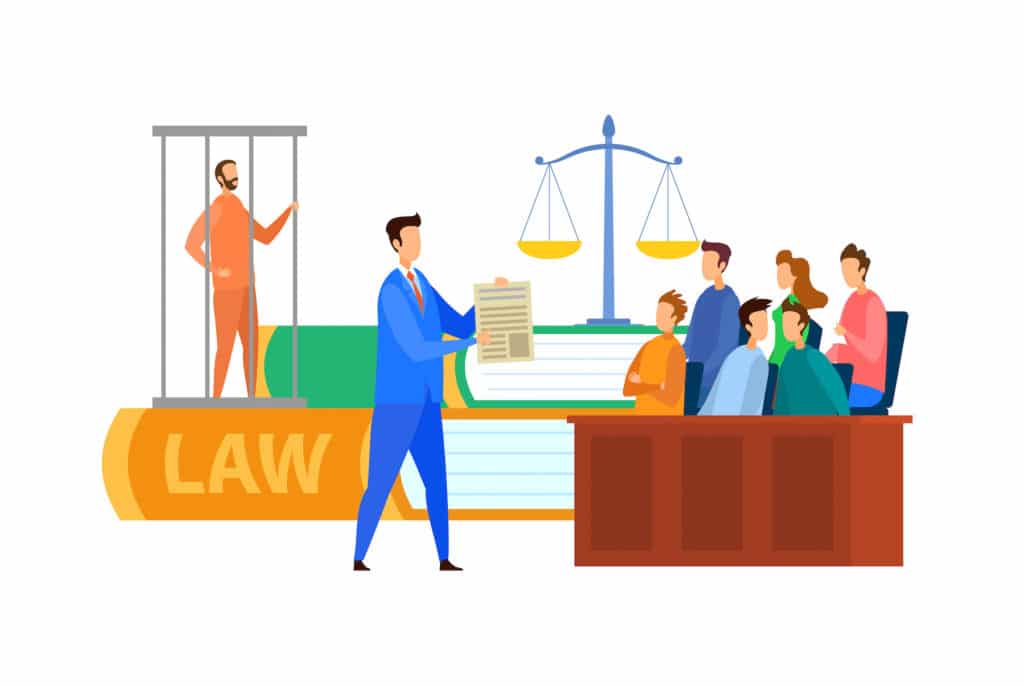Attaining Success in Courtroom Trials: The Importance of Specialist Trial Presentations
Attaining Success in Courtroom Trials: The Importance of Specialist Trial Presentations
Blog Article
Browsing the Complexities of Trial Presentations: Tips for Seamless Shipment and Compelling Disagreements
In the realm of legal process, the art of test presentation stands as a crucial determinant of success. The intricacies fundamental in trial discussions call for a fragile equilibrium of skill, strategy, and skill.

Understanding Test Goals
To efficiently browse a trial, it is crucial to have a clear understanding of the objectives that require to be attained. Prior to tipping right into the courtroom, legal teams need to specify their goals and preferred outcomes. These goals work as directing concepts throughout the trial, forming approaches and influencing decision-making processes.
Understanding trial objectives entails a comprehensive evaluation of the situation, legal criteria, and the customer's benefits. Trial Presentations. It requires a careful examination of the facts, recognizing essential issues, and expecting prospective obstacles. By establishing measurable and certain objectives, lawyers can customize their disagreements and presentations to line up with the wanted outcomes
Moreover, a clear grip of test purposes allows legal teams to prioritize evidence, witnesses, and legal disagreements efficiently. It permits the advancement of a coherent narrative that reverberates with the court and court, reinforcing the general case discussion.

Organizing Evidence Successfully
Having a clear understanding of trial purposes lays the foundation for arranging proof effectively in lawful process. By aligning the presentation of evidence with the preferred end results of the test, legal groups can reinforce their debates and improve their persuasiveness.
Another trick element in arranging evidence properly is developing a rational flow. Presenting evidence in a consecutive and meaningful manner can help develop an engaging story that supports the lawful arguments being made. In addition, making use of visual help such as graphes, charts, or timelines can additionally boost the organization of evidence and aid in clarifying complex relationships or sequences of occasions.
Moreover, guaranteeing that all proof provided is appropriate and permissible to the case is important. Unimportant or inadmissible evidence can interfere with the toughness of the debate and possibly harm the reliability of the offering party. A precise evaluation and selection process need to be taken on to include only the most legitimately audio and impactful proof in the trial presentation.
Crafting Convincing Stories
Crafting engaging stories plays a pivotal function in offering influential disagreements throughout legal process. Click Here When building a story for a test discussion, it is essential to establish a clear storyline that highlights crucial factors and links them in a meaningful way. By weaving with each other evidence, testimony, and lawful arguments into a influential and natural story, legal specialists can successfully promote for their clients and enhance the chance of a beneficial outcome in the court.
Grasping Aesthetic Aids
Reliable usage of aesthetic help is key to boosting the effect and clarity of trial discussions. Aesthetic help, when made use of strategically, have the power to simplify complex info, enhance bottom lines, and leave a long-term perception on the court and jury. To grasp visual help in test discussions, it is essential to make sure that they are clear, concise, and appropriate to the debates being made.
When including aesthetic aids, such as graphes, charts, photographs, or timelines, into a trial presentation, it is vital to keep them aesthetically appealing yet expert. The visuals should match the verbal arguments, supplying a graph of the info being discussed without frustrating the audience with unnecessary details.
In addition, experimenting the aesthetic help beforehand is critical to ensure a seamless distribution during the trial. Familiarizing oneself with the content, shifts, and timings of each aesthetic aid can aid maintain the circulation of the discussion and prevent technological glitches that may develop.
Delivering Impactful Closing Arguments
An engaging closing argument serves as the conclusion of a test presentation, encapsulating the core story and convincing the judge and court in the direction of a favorable choice. Begin by laying out the main arguments that support your client's placement, highlighting why the proof presented throughout the test sustains your story.
Moreover, incorporating emotional charm click site can further reinforce your closing debate. Eventually, a well-crafted closing debate ought to leave a long lasting impact, compelling click to investigate the judge and jury to rule in your client's support.
Final Thought
Finally, mastering trial discussions includes comprehending goals, arranging proof, crafting narratives, utilizing aesthetic help, and providing impactful closing disagreements. By carrying out these strategies efficiently, attorneys can present their situation perfectly and make engaging arguments in the courtroom. It is vital to browse the complexities of trial discussions with precision and ability to achieve success in legal procedures.
By straightening the presentation of proof with the desired results of the trial, lawful groups can enhance their debates and improve their persuasiveness (Trial Presentations). To grasp aesthetic aids in trial discussions, it is crucial to make certain that they are clear, succinct, and pertinent to the arguments being made
An engaging closing debate serves as the conclusion of a test presentation, enveloping the core story and encouraging the court and jury in the direction of a favorable decision. Begin by laying out the primary debates that sustain your customer's position, stressing why the proof provided throughout the trial supports your narrative.In verdict, understanding trial presentations involves comprehending purposes, arranging evidence, crafting narratives, making use of visual help, and supplying impactful closing debates.
Report this page